#"Impact of balanced extracurricular activities on children"
Explore tagged Tumblr posts
Text
The Art of Balance: Optimizing Children's Development Through Extracurriculars
Balance kids' development with academics, sports, arts, and free time to avoid stress. Tips on choosing activities and downtime included. #childdevelopment
Extracurricular activities can provide immense benefits for a child’s development. Sports, music, art, clubs, and other pursuits allow children to explore passions, build skills, and form friendships. At the same time, parents want to ensure their kids are not overscheduled to the point that it causes stress or takes away from family time. Finding the right balance is key. This article will…
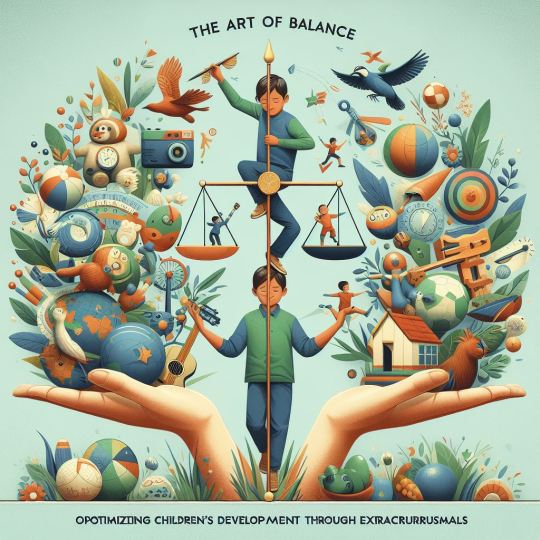
View On WordPress
#"Balancing extracurricular activities for children"#"Best extracurricular activities for child development"#"Choosing right extracurricular activities for children"#"Effect of extracurricular activities on children"#"Extracurricular activities and children&039;s growth"#"Extracurricular activities for overall child development"#"Guide to children&039;s extracurricular activities"#"How to balance children&039;s extracurricular activities"#"Impact of balanced extracurricular activities on children"#"Importance of extracurricular activities in child development"#"Managing kids&039; extracurricular activities"#"Optimal number of extracurricular activities for kids"#"Parent&039;s role in children&039;s extracurricular activities"#"School extracurricular activities for child development"#"Strategies to balance kids&039; extracurricular activities"
0 notes
Text



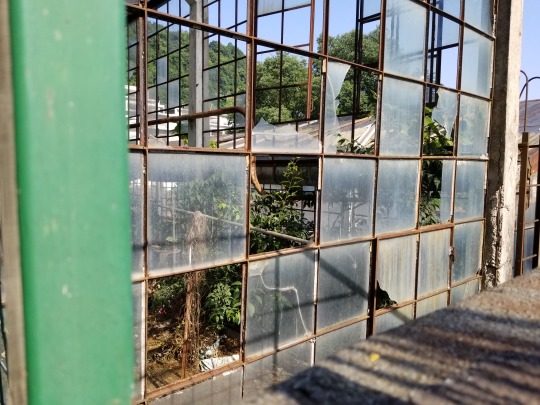



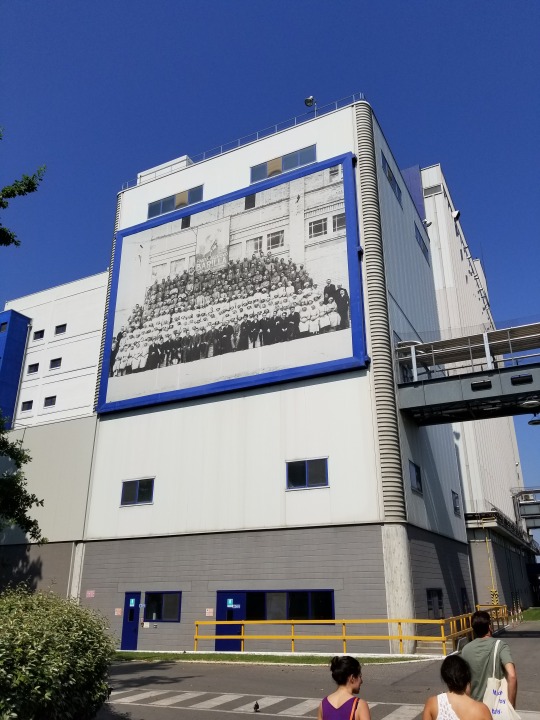
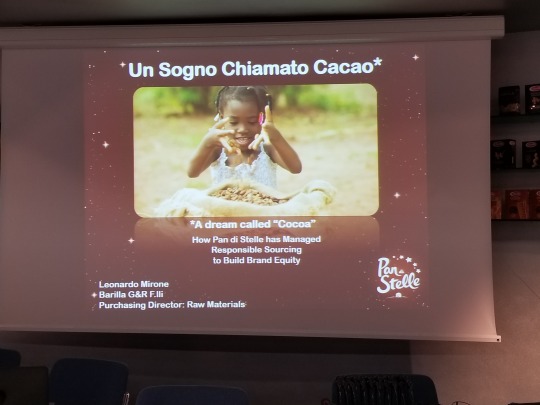

Days 8 & 9 –
Yes, I’m still alive. Unfortunately, I didn’t notice my pictures and writings didn’t post. Fortunately, Tumblr saved the pictures I wanted to share, but it dropped about half of what I wrote.
On Wednesday, our class debriefed a bit more from Davines and started working on an exercise to incorporate what we knew about the company and its sustainability goals into a marketing campaign for their new product: a single shampoo. This shampoo comes in a very minimalist bottle with a very interesting quote on the front: “I went in search/ of a bad person;/ I found none as I,/ seeing myself,/ found me the worst”, and I took this quote to heart, and channeled a Patagonia advertisement called “Don’t Buy this Jacket”. I was very proud of my original advert and got a comment from Nora later that night; both she an Vincent were enthralled at how I made the very disconnected quotation on the front connect to the marketing of the product and Davines’ own shortcomings with reaching 100% sustainability.
Later that night, we took a bus to the small town of Valdagno, home to the Marzotto Corporation and birthplace of Italia Innovation co-founder, Marco. Marco gave us a tour of the old city, and the new “Social City” constructed by Marzotto during the 1910’s-40’s. Something he noted, and admitted, was that the town and company were both able to grow during this time, despite larger economic hardship, due to providing military uniforms for European powers.
It was interesting that a company so focused on textile production built educational facilities with no connection back to the company, and that would take students into other industries. No concrete answer was ever given for this, but my personal thoughts were that Marzotto used things like the engineering and music schools to attract more high-level talent and provide worker’s families with additional extracurricular activities to boost employee morale.
The company hit its peak in the 1980s and 90s, eventually owning Lanerossi, Hugo Boss, Nova Mosilina, and Fila, though due to (I assume) infighting in the family, these brands were eventually spun off, leading to the loss of 9,000 jobs in the region. Today, the small garment factory and textile factory only employ roughly 1,000 people, though we learned about 300 of those will be shifting to part-time work. Despite this, at a town hall on economic and social innovation we attended, almost everyone seemed to clap for the CEO – more on this later.
We took a quick water and wine break before meeting with the Mayor, and his goals for his town seemed to reflect those of both other smaller Italian cities and those that former US manufacturing hubs had. Part of his town’s problem stemmed from the fact Marzotto still owned all manufacturing assets they built, even if they were disused and in disarray. Likewise, the Italian economic crash lead to the national government helping itself to town’s rainy day funds, leading to a contraction of public employees and services. In fact, of 230 or so employees, the city had to fire 100 over the course of a few years. Furthermore, due to the burden of caring for the social city after Marzotto stopped funding these services, the effort of providing the same quality of life as 30 years ago has strained political and economic resources.
The most interesting thing we learned from the mayor is that young people made up the majority of his base, as he’s poured more funds into education and established a council (or process of) grievances for underaged citizens. He was still worried, when asked, that even with these steps, children would leave for bigger cities and more opportunities, especially as the youth unemployment rate rises in Italy. Interestingly enough, the older rate of unemployment has remained relatively unaffected despite the drop in Marzotto staff.
After dinner, we were invited to a town hall panel that included Vincent and Debra, but also had a writer from The Economist and Marzotto’s CEO, Giorgio. All of us were shocked at the warm welcome Giorgio received and the applause he got when introduced. This was increased when we learned of his disconnect with the people of Valdagno and how he views economic and environmental initiatives outside of Italy as the bread-and-butter of his operation. He delivered a canned speech containing a video and PowerPoint, with both focusing on social improvements in Czech factories and environmental initiatives in Australia and New Zealand. All of us students, and even Debra were horrified by his behavior during the panel, and I think we were too shocked to ask questions. This town hall stretched late into the night, and we got home at a little after midnight.
The next morning, we took a bus back to Parma and visited the world’s largest pasta factory – Barilla Parma. I saw a package of my favorite cookie, Pan di Stelle, on their display in the conference room and everyone from Barilla was shocked that a white kid from America was addicted to these cookies, and I was shocked we were going to have a presentation on their social and environmental initiatives around cocoa-producing communities.
We viewed several videos on their environmental and sustainability initiatives, then went for a tour of the pasta plant. Unfortunately, for both hygiene and corporate-secret reasons, I was not allowed to bring my phone onto the production floor, but everything was incredibly automated, delicately balanced, and delicious. Yes, you can eat raw, not-yet-firm pasta, and much was eaten. I considered this my “free sample”.
We learned that despite the increase in automation, none of the 100 workers on the plant floor were laid-off, but that all were retrained and that production doubled, leading to a 3-year payback period for the entire suite of upgrades. (Please watch this video on the cool robots: https://www.youtube.com/watch?v=jkoiiS81goU) What was even more interesting was that even the 60-or-70 year old drying machines could still be used, and that they looked as new and as beautiful as the modern machines on the line next to them.
After the tour, we had lunch with their Head of Sustainability, some members of the marketing and HR teams, and a member of the Barilla family and ate some amazing ass pasta. And not just pasta, they had bread and fruit and meat – all things they championed through their “don’t diet, eat in moderation” campaign.
This campaign actually lead to an interesting discussion between Andy and I on how they could advertise the Mediterranean diet as the diet of moderation, but still produce delicious and addicting cookies. While not 100% solved, the aforementioned Pan di Stelle cookies have 37.4 Calories per cookie, which is less than the 53.3 per Chips Ahoy cookie. It also has fewer carbs (5g v 7.3g), less fat (1g v 2.6g), and even has some protein from the nuts used. On top of all this, the Pan di Stelle cookie is simply more filling, and so, one eats less of it. This is how we wrapped our heads around how a conglomerate like Barilla and its brands could justify making a detrimental product and advertise to basically, not eat it. People who enjoy it aren’t addicted like in America.
The social and environmental work they do seems to focus on the impacts of individual product lines rather than the whole company – Pan di Stelle helps farmers diversify crops and return back to polycropping with Bananas in addition to Cocoa, and also provides wells and educational facilities in regions they purchase from. The main pasta ingredient, wheat, now is required to be grown on fields that participate in crop rotation and that dedicate 3% to natural flowers and vegetation for beneficial insects, while also requiring a reduction in fertilizer and uses satellite and sensor imaging to determine what wheat is best for the planet and ourselves.
After a long day at Barilla, we returned back to Verona and had a late night in just drinking wine and making really good sandwiches with lunch meat we bought from the supermarket down the street.
4 notes
·
View notes
Text
“I Would Rather Die Than Disappoint My Parents”
Taylor Abouzeid
Today I would like to stand on my newfound soapbox of knowledge and discuss a topic at the forefront of the minds of many students like myself: stress. More specifically the detrimental repercussions of unnecessary parental stressors, a consequence of outdated ideals of success.

In a world focused around monetary definitions of success, the stress forced on kids to perform at superhuman levels is at an all-time high. These expectations are heightened in students hailing from parents traditionally viewed as successful. Higher rates of drug use, feelings of hopelessness, and the creation of a “numb” generation are all outcomes of parental pressure on antiquated ideas of success.
If the description above sounds similar to you or your child’s situation, the research-backed information provided below may drastically change how you view this phenomenon, or reconfirm that this generation is under unprecedented spirit-breaking stress. I am aware that it is not the intention of parents to put this potentially fatal stress on their children, but sadly it is a consequence of parenting. As parents you are often quick to place blame away from yourselves, this is understandable as it is hard to admit that your own - potentially subconscious - beliefs are slowly killing your child.
Now that I have your attention, I would like to make one thing clear: Yes, these are my own thoughts and beliefs, but hyperlinked are the copious amounts of SCENTIFIC SUDIES that confirm the hard reality behind parental stressors. If I have still yet to deter those of you who admit a potential flaw in normative parenting styles… I encourage you to keep reading.
The Stress/Grade Correlation:
I know it can be hard to hear, but as a parent it is not your job to manage your child’s studies. In a study of 148 teachers, 81% reported that teachers, rather than parents, should be the ones motivating students. Further, a majority of the studied teachers encouraged NO PRESSURE from parents regarding scholastic achievement. Students spend roughly eight hours in school per day, during this time they are surrounded by reminders of due dates, in class checkpoints, study guides, and soul-crushing red pen criticism. So, when your child comes home from school the last thing that they need is a callback to the chaotic and stressful nature of scholastic schedules where teachers squeeze months’ worth of learning into a 50-minute class period. If I have still not convinced you that your input on their classwork is not necessary, there is another study that showed a critical tie between a high pressure to achieve and a lower GPA. Criticism and success are inversely related within students. This is not my opinion, this is a fact.
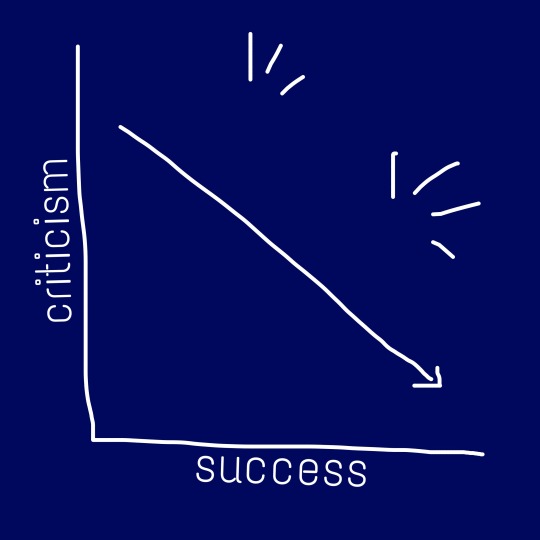
You Don’t Understand:
Recent research has shown that students are faced with higher levels of stress now more than ever. Factually speaking, you do not know what your students are going through, as you have not experienced the degree to which students are being evaluated and subsequently judged on their scholastic worth. To go further, students are even reporting higher stress levels, than working adults. Students are often involved in many things outside of the classroom; sports, band, clubs, foreign language studies, and especially homework have created a detrimental complex of overwhelming magnitude. Your child is likely trying to balance too much, but have you ever thought about why? Is it really their choice to participate in numerous extracurriculars resulting in reported feelings of “drowning” and “suffocation”? I encourage you to take a step back to ensure they are doing these activities for their own enjoyment, and not for your approval. This critical perspective leads me to my next point.
Disappointment:
“I would rather die than disappoint my parents.” When I came across this quote, I held my breath, never in my life had I seen so many years of feeling so clearly expressed in 8 words at the top of my browser. These feelings of a fear to disappoint are extremely common in children coming from high socioeconomic standing (SES) families. A subculture of overstressed and workaholic children is forming before society’s eyes. Often unbeknownst to parents, children hide their emotions, commonly known as masking. This deception of parents is especially high among high SES kids, as a distanciation of parents is not uncommon in the culture. As students who have grown up in a society where emotion is viewed as “unprofessional,” at a young age kids begin to keep their feelings quiet. This silence leads to a creation and separation of two identities, one for the outside world and one for the self, this often manifests in feelings of dissociation. Studies have also shown a correlation between parental emphasis on achievement (rather than character attributes like happiness or kindness) and a significant increase in depression, anxiety, low self-esteem, behavioral problems, eating disorders, and cognitive learning problems.
Consequences:
We know parental expectations cause anxiety (especially in families with pronounced wealth), and overarchingly, studies show that this heightened anxiety is correlated with low personal success expectancy (self-esteem beyond schooling). When students are scared to fail and disappoint parents, they stop taking risks, retract from activities that could potentially place them below the #1 spot (the only “acceptable” position in high society). A perfectionist outbreak has contaminated today’s youth. When parents define success along a monetary scale, children follow suit; similarly, when a parent defines a child’s success by their scholastic achievement, the student does as well. Your child inevitably receives a less-than-perfect grade their self-identity and confidence plummets to seriously concerning levels. This epidemic has forced late nights of studying and impractical amounts of course work on your kids. The pressure and consequential overdrive that students are now running at, leaves kids exhausted, feeling tired, inadequate and alone. The consequences of parental stressors go beyond the psyche.
In a comparison among low and high SES families, those students from rich families were more likely to abuse drugs for the purpose of “escaping stressors.” Teens often seek relief from parental stress (and the added weight of masking) through self-destructive behaviors. Further, children of “successful” families report clinically significant levels of depression, anxiety, and delinquent behaviors that are two to three times the national average. Personally, the most impactful statistic was that of suicide rates.
One in five students have contemplated suicide because of a pressure for exceptional (and frankly unrealistic) grades. In Palo Alto, a traditionally rich zip code, students are committing cluster suicides at unprecedented rates. Research has found that there is an obvious link between suicidal ideation and parental pressure to succeed. As previously mentioned, success is defined separately across cultures. In high SES families, money is often the reigning determinant.
I wanted to be surprised by these findings, but sadly these are not new ideas to my peers and me. Students are dealing with the emotions and consequences to stress every day. But you can help.

Your Turn:
We are all guilty in propagating the normative definitions of success, but admitting your own faults can be helpful. Don’t try and place blame on your child’s feelings elsewhere than they describe, believe them. Communicating about stress is the first, and maybe the hardest step. If your child is confident enough to speak on the pressure or stress that they are feeling, the last thing you should do is anything to make them retreat back behind their self-damaging mask to bring up at a later time, only when it becomes unavoidable. Listen to your child, don’t interrupt, don’t say you understand (because you don’t), just be there and let them explain their emotions. I am not trying to deter you from coaxing these conversations, but rather explaining how the power structure of parent-child relationships can lead to a disrespect and disproportionate valuing of conversation.
We need to change the language surrounding stress, many kids have trigger words, in my peer circle the word “proud” makes us itch. “Proud” asserts a claim over our (the students) achievements, that you (the parents) did not earn. For others it might be progress, due, completed, better, ready, or truly any other word.
These conversations are hard, but it is only through a more open communicative space that you can begin to sympathize with the pain associated with stress and begin to adapt your parental role accordingly. In some cases, therapists are beneficial, try bringing up the idea to your child in a way that promotes family unity. Do not call the therapist a “shrink” or a “crazy doctor” because that implies something is wrong with your child. Bottom line, be aware of what you are saying and how it affects your child’s perceptions of the world.
Communication is the forefront of confronting these devastating issues. Whole family conversations can be helpful in creating a common knowledge of a child’s stressors. One-on-one conversations can be equally helpful, it really is dependent on the child. Overall, let them decide how to approach the topic, let them decide how to further mitigate conversation, and lastly, let your child choose their life. As a parent it is your job to love and support your child, not enforce your own predisposed ideas of success onto their own lives. Relax. Take a deep breath, and let the conversation happen.
0 notes